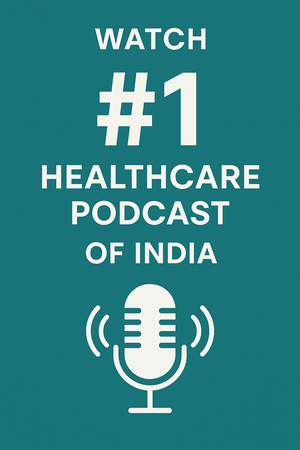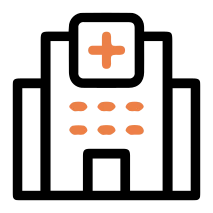Understanding Respiratory Distress Syndrome (RDS) in Children
Respiratory Distress Syndrome (RDS) in children is a serious breathing disorder, particularly affecting premature newborns and sometimes older infants and toddlers in critical conditions. The condition is primarily caused by a lack of surfactant—a substance that helps keep the lungs open and prevents them from collapsing. Without enough surfactant, a child’s lungs may not be able to expand properly, leading to difficulties in breathing and reduced oxygen levels in the body.
Although RDS in neonates is more common in premature babies, full-term babies with certain complications, as well as older children with underlying respiratory or cardiac issues, can also show signs of distress. With increasing awareness, early diagnosis, and the availability of specialized neonatal intensive care units (NICUs), the survival rate of infants with RDS has improved significantly. However, timely recognition and medical intervention remain critical to improving outcomes.
What Causes Respiratory Distress Syndrome in Children?
The primary cause of RDS in infants is the immaturity of the lungs. The lungs begin producing surfactant late in pregnancy—usually after 32 to 34 weeks of gestation. Premature babies born before this period often have lungs that aren’t ready to function on their own, making them highly susceptible to neonatal RDS. In some full-term babies, surfactant may be dysfunctional or insufficient due to genetic or developmental conditions.
Other causes of respiratory distress in children include:
- Infections like pneumonia or sepsis.
- Congenital heart disease affecting pulmonary circulation.
- Meconium aspiration syndrome, where the baby inhales its first stool before or during delivery.
- Birth trauma affecting the lungs or chest wall.
- Pulmonary hemorrhage or bleeding in the lungs.
- Transient tachypnea of the newborn (TTN), which is a milder form of breathing difficulty caused by retained lung fluid.
While premature birth is the leading risk factor, other contributors include maternal diabetes, cesarean delivery without labor, multiple births, and a family history of genetic lung conditions.
Recognizing the Symptoms of RDS in Children
Recognizing the symptoms of respiratory distress in children early can be lifesaving. Parents and caregivers should watch out for:
- Rapid breathing (tachypnea): One of the earliest and most common signs.
- Grunting: A soft sound during exhalation, which indicates the baby is trying to keep air in the lungs.
- Nasal flaring: Widening of the nostrils during each breath to increase oxygen intake.
- Retractions: The chest appears to suck in around the ribs and sternum with each breath.
- Cyanosis: A bluish tint to the lips, face, or fingertips due to low oxygen levels.
- Apnea: Temporary cessation of breathing.
- Lethargy or irritability: Caused by hypoxia and poor oxygenation of the brain.
These signs may appear within minutes to hours after birth in premature babies or may develop rapidly in older children during acute illness. If untreated, RDS in children can lead to severe complications, including organ failure or even death.
How is RDS Diagnosed in Children?
Diagnosing Respiratory Distress Syndrome in children requires a combination of clinical evaluation and diagnostic tests. Doctors typically start with a physical exam and review the child’s birth history, gestational age, and any complications during labor or delivery.
Diagnostic methods include:
- Chest X-ray: Reveals a “ground-glass” appearance in the lungs, characteristic of RDS.
- Blood gas analysis: Measures oxygen and carbon dioxide levels to assess respiratory function.
- Pulse oximetry: Continuously monitors oxygen saturation levels.
- Lung ultrasound: Useful in some settings to assess lung fluid and surfactant levels.
- Cultures: To rule out infections that may mimic or worsen respiratory distress.
Accurate diagnosis allows doctors to differentiate between RDS and other causes of breathing difficulties in children, such as congenital anomalies, sepsis, or metabolic conditions.
Treatment Options for Respiratory Distress Syndrome in Children
Treating RDS in children is a race against time. Early intervention dramatically improves the child’s chance of survival and long-term lung function.
The main treatments include:
- Surfactant replacement therapy: Administered directly into the lungs through a breathing tube to reduce surface tension and improve lung expansion.
- Oxygen therapy: Provided via nasal cannula, CPAP (Continuous Positive Airway Pressure), or mechanical ventilation depending on severity.
- CPAP or mechanical ventilation: Used to keep airways open and support breathing when spontaneous effort is insufficient.
- IV fluids and nutrition: Since feeding orally might be difficult, nutrition is often delivered intravenously.
- Antibiotics: Empirically started until infection is ruled out.
In more advanced centers, High-Frequency Oscillatory Ventilation (HFOV) or inhaled nitric oxide may be used for severe cases, particularly in older children or those with underlying conditions.
Complications of RDS in Children
While many children recover from RDS, some may develop complications, especially if they are very premature or treatment is delayed:
- Bronchopulmonary Dysplasia (BPD): A chronic lung condition due to prolonged oxygen therapy or mechanical ventilation.
- Intraventricular hemorrhage (IVH): Bleeding in the brain due to hypoxia.
- Retinopathy of prematurity (ROP): Eye damage caused by high oxygen levels.
- Developmental delays: Due to prolonged hypoxia or NICU stay.
- Persistent pulmonary hypertension: Particularly in term infants with severe RDS.
Early intervention, follow-up care, and developmental assessments are crucial for these children.
Table: Key Differences in RDS Presentation by Age Group
| Neonates (Premature or Full-Term) | Older Infants and Children |
|---|---|
| Seen within hours of birth | Usually occurs due to infection or trauma |
| Surfactant deficiency is primary cause | Often due to pneumonia, asthma, or inhalation injury |
| Rapid progression, needs NICU care | May respond to antibiotics and supportive therapy |
| High risk of long-term complications | Lower complication rate with timely treatment |
| CPAP and surfactant therapy are mainstays | Oxygen therapy and steroids more commonly used |
Preventing Respiratory Distress Syndrome in Children
Preventing RDS in newborns begins with prenatal care. When premature delivery is anticipated, doctors may administer:
- Antenatal corticosteroids to accelerate lung maturity in the fetus.
- Tocolytics to delay labor and give lungs more time to develop.
- Managing maternal conditions like diabetes and infections.
- Planned delivery in hospitals with NICUs.
For older children, prompt treatment of infections, avoiding environmental pollutants, and vaccinations (like for flu, RSV) are key.
Frequently Asked Questions
What is the most common cause of RDS in children?
The most common cause of Respiratory Distress Syndrome in children, especially neonates, is surfactant deficiency due to premature birth. Surfactant is crucial for reducing surface tension in the lungs and enabling proper expansion during breathing. When a baby is born before 37 weeks, their lungs might not be developed enough to produce adequate surfactant, leading to breathing difficulties. In older children, causes may include infections like pneumonia, aspiration syndromes, or chest trauma. Early identification of the underlying cause is essential for appropriate treatment. Preventive strategies, such as administering corticosteroids to mothers at risk of preterm labor, have significantly reduced the incidence of RDS.
Is RDS in children life-threatening?
Yes, RDS can be life-threatening if not managed in time. It can lead to severe oxygen deprivation, affecting the brain, heart, and other organs. However, with timely diagnosis and treatment—such as surfactant therapy, mechanical ventilation, and intensive monitoring—most children recover well. Advances in neonatal care have greatly improved outcomes, even in very premature babies. Still, complications like bronchopulmonary dysplasia and developmental delays remain risks, especially in extreme cases.
Can full-term babies get RDS?
While rare, full-term babies can develop RDS, particularly if they suffer from meconium aspiration, congenital infections, or delayed clearance of lung fluid. In such cases, the symptoms may resemble those seen in premature babies, including grunting, rapid breathing, and cyanosis. Full-term infants with conditions like persistent pulmonary hypertension of the newborn (PPHN) may also experience respiratory distress requiring intensive care.
How is RDS different from asthma or pneumonia?
RDS is primarily a condition of immature or insufficient surfactant production, mostly in newborns, whereas asthma is an inflammatory airway disease often triggered by allergens. Pneumonia is an infection of the lungs, which can cause similar symptoms like rapid breathing and low oxygen levels. However, RDS typically presents right after birth, while asthma and pneumonia are more common in older children. Diagnostic tests such as chest X-rays, lab tests, and clinical history help differentiate these conditions.
How long does RDS last in newborns?
The duration varies depending on the baby’s gestational age, severity of the disease, and response to treatment. Mild cases may resolve within 3–5 days, especially if treated promptly with surfactant and oxygen therapy. Severe cases in extremely premature infants may take weeks and require prolonged NICU stay. During recovery, babies may still need respiratory support or feeding assistance.
Can RDS be treated at home?
No, RDS is a medical emergency that requires hospital-based treatment. Infants need monitoring of vital signs, oxygen levels, and may require mechanical ventilation. Even in older children with milder forms of respiratory distress, hospital admission is often necessary. Home remedies or over-the-counter treatments are not appropriate for RDS and can delay critical care, leading to poor outcomes.
Are there long-term effects of RDS in children?
Some children, especially those born very early, may experience long-term complications. These include chronic lung conditions, delayed growth, developmental delays, and hearing or vision issues due to extended NICU stay. Regular follow-ups with pediatricians and developmental specialists help track and manage these outcomes. With improvements in neonatal care, many children with RDS grow up healthy with minimal long-term effects.
Can RDS occur more than once in a child?
Classic RDS, as seen in neonates, is typically a one-time condition. However, respiratory distress due to other causes can recur, especially in children with chronic lung conditions, asthma, or immune deficiencies. It’s essential to understand the cause of each episode and consult with a pediatric pulmonologist if a child experiences repeated breathing problems.
What role does surfactant play in RDS?
Surfactant is a lipoprotein substance produced by lung cells that reduces surface tension, preventing the alveoli from collapsing during exhalation. In RDS, the absence or dysfunction of surfactant leads to lung collapse, impaired gas exchange, and low oxygen levels. Administering surfactant therapy directly into the lungs has been a breakthrough in treating RDS, significantly improving survival and reducing complications.
What can parents do to support a child recovering from RDS?
Parents play a crucial role during recovery. Ensuring follow-up visits, managing any oxygen therapy at home, attending physiotherapy or developmental sessions if needed, and staying vigilant for signs of infection are important. Emotional support and bonding are also vital, especially after prolonged NICU stays. Joining parent support groups and counseling can help deal with the stress of caring for a medically vulnerable child.
Research Articles on Respiratory Distress Syndrome in Children
| Title | Author(s) |
|---|---|
| Surfactant Therapy in Neonatal RDS: A Review | Dr. Emily Jordan |
| Advances in Neonatal Ventilation for RDS | Dr. Steven Wells & Dr. Tara Ali |
| Long-Term Outcomes of Premature Infants with RDS | Dr. Meera Patel |
| Role of Antenatal Steroids in Preventing RDS | Dr. Karen Smith |
| Clinical Approach to Respiratory Distress in Full-Term Neonates | Dr. Rajeev Menon |
| Comparison of CPAP and Mechanical Ventilation in Treating Neonatal RDS | Dr. Michael Grant |
| Bronchopulmonary Dysplasia as a Complication of Severe RDS | Dr. Priya Verma |
| RDS in the Context of Meconium Aspiration: Diagnosis and Treatment | Dr. Anna Ricci |
| Incidence of RDS Among Infants Born via Cesarean Without Labor | Dr. Jonathan Lee |
| Role of Pulse Oximetry in Early Detection of Neonatal Respiratory Distress | Dr. Nisha Kapoor |






 and then
and then